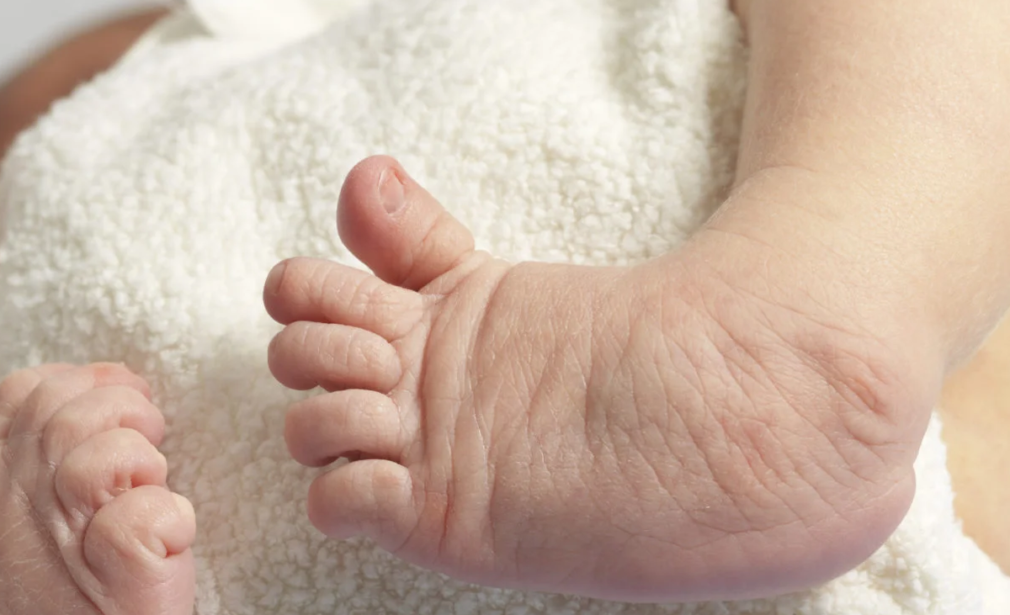What it means?
It is condition in which baby foot will be turned inward and downward. It is one of the most common congenital anomalies.
What causes it?
- Exact cause is not known
- The soft tissues present on inner and backside of the foot and ankle were tight which in turn pulls the baby feet inward and downward results in clubfoot deformity
How child will present like?
- Babies with clubfoot will not have pain
- More common in male babies than girl babies
- It can occur in one foot or both feet
- Baby feet will be facing inward and downward
- Deformity may be fully or partially correctable which helps to differentiate what type of clubfoot baby is having
- Babies with Clubfoot when have other associated problems, the foot can be stiffer and harder to treat than those babies have clubfoot alone
- Clubfoot tend to be passed along in families
- Sometimes clubfoot babies can have limb length difference, small foot size and thin legs on the affected side compared to the normal side
What are the tests required?
- Baby foot need to be assessed whether it is on one side or both side, severity of stiffness of foot, any difference in limb length and foot length, calf circumference, sensation of the foot, number of toes in the foot
- In addition to examining baby’s feet, baby need to assessed as whole whether any other joint involvement, spine abnormalities
- Baby with clubfoot alone will not require any x-rays
- When baby have associated problems need for x-ray of the limb, ultrasound scan of the hips and spine accordingly
What are the treatment options?
- Babies born with clubfoot will not get corrected by itself need to get diagnosed and treated at the earliest for best outcome
- The treatment for clubfoot should be started shortly after birth so that the baby foot will become normal before they start trying to walk
- Serial manipulation and casting by PONSETI method is mainstay of treatment. This method means baby foot will be gently stretched to neutral position and cast applied from toes to the upper thigh in the corrected new position at weekly interval. This process takes 5 to 6 weeks. Once the foot reaches near normal corrected position, small procedure to lengthen the tight Achilles tendon is done through very small incision and cast applied for another 3 weeks. This is done in operating room under sedation
- Once casting phase completed, the foot become neutral. In order to maintain this foot in corrected position and to prevent the foot from turning back to initial position baby need to wear a SPECIAL BRACE that means shoes attached to a bar. This brace need to be worn for 23hours per day initially then the duration of the bracing will reduce gradually as the baby grows and after several months it need to be worn for just at night and nap time
- BRACING PHASE is very crucial and important. The parents need to understand that baby feet looks normal at the end of treatment but there is very high chance for the feet to turn back to its initial position at any point of time which may require casting again or even additional surgeries to bring back the feet to normal position. In order to prevent the recurrence, brace protocol, stretching exercise and follow up to be done at regular intervals as per advice
- In severe cases of clubfoot which have severe deformity and very stiff feet associated with other problems may require surgery to correct the foot position. Surgery involves lengthening or moving the tendons, release of tight soft tissues, and metal pins can be used to hold the bones in new corrected position. After surgery, the foot will be kept in cast for few weeks until the soft tissues and bone heals then the baby can be mobilised
- It is possible to treat clubfoot in older children.
What will be outcome?
- Most babies with clubfoot will be able to walk, wear regular shoes and play sports without pain
- If clubfoot not treated, the foot will become painful and limit the ability to walk
- Chance of recurrence that means the tendency of the feet to drift back to its initial position is very high hence need to brace the baby foot and do regular follow up as per advice

